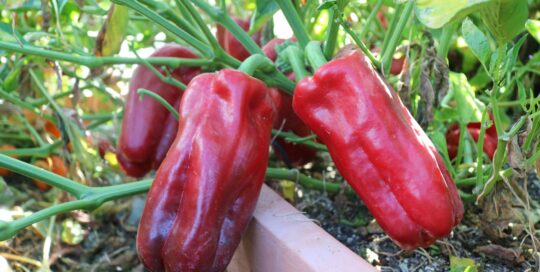Composting with the Eco Stack Composter
Views: 3826

For as long as I’ve had a garden, I’ve had a compost pile of some sort. And that’s basically what it is—a pile.
When I was growing up and had more space on the farm, I’d toss weeds and whatnots in a general direction and, over time, the pile would sag, soften, and do its decomposing duties.
In my community garden plot, my compost pile is kept more ruly, by order of the garden’s protocols. Stacks of milk crates contain most of the debris my garden produces. These two processes take some time and some sorting and sifting, but I am rewarded with nutritious compost in the end.
Neither of these two piles of mine contained food scraps. You’d think the farm’s compost pile would be brimming with corn husks and potato peels, but those went to the pigs. The community garden’s compost pile might have a rotting pepper now and again (thanks to those pepper maggots) but, again, garden rules say no food waste. There’s icky creatures that dwell in urban environments, and we certainly don’t want to encourage them with more food.
Well, I’ve moved. I’m still in a city, but it’s a space that’s more spacious, a little less nitty-gritty. And while we don’t have a garden at the new building, we do have a cement-floored wooden enclosure meant for the storage of our trash and recycling bins. We had our builders construct this enclosure a bit bigger to also accommodate a composter. Hallelujah, we’re finally composting our food scraps.
Eco Stack Composter
We bought the Eco Stack Composter from Gardener’s Supply Company. It’s a simple design—three plastic tiers fit together to form an obelisk. And there is a lid that opens easily. The bottom is open to the ground. I would say this would be a problem if we were still in the nitty-gritty city, as rodents could tunnel up from underneath and get inside. However, the cement floor will help deter rodents and other pests.
I also had the forethought to set the Eco Stack on a 2-ft. by 2-ft. piece of ¾-inch thick plywood. At the bottom are a few aeration vents, as well as a few on the top of the lid. The lid’s holes also allow in some water to keep the mixture moist but not soggy.
The composter has about five day’s worth of veggie scraps, egg shells, and one or two weeds. Baby steps.
Brown vs. Green
According to the directions, compost piles and the microorganisms that do the dirty work are most efficient when there is a 25 or 30:1 ratio of carbon-rich to nitrogen-rich materials.
The carbon-rich stuff or “brown” materials are things like straw and leaves. Nitrogen-rich or “green” materials are items such as grass clippings, freshly pulled weeds and kitchen scraps.
Too much “green” (which I might end up having as a result of all the food scraps) may result in a slowly decomposing (and smelly and soggy) pile. To counteract this, I may collect dry leaves from the neighborhood. I understand I also can add shredded cardboard and paper.
Whether it decomposes slowly or quickly doesn’t matter to me. I just want to be sure it doesn’t give off too malodorous of a stink. After all, what would our new neighbor’s think?
Meet Ellen Wells
When you’re raised on a farm, you can’t help but know a thing or two about gardening. Ellen Wells is our expert on edible gardening.…
Ellen's Recent Posts

Pepper Red Impact an All-America Selections Winner






